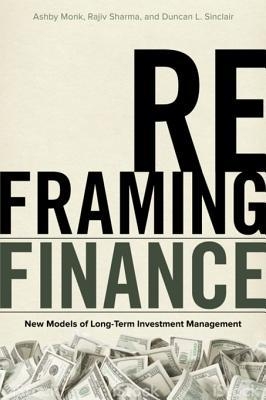
1
A Collaborative Model for
Long-Term Investing
“The single most realistic and effective way to move forward is to change
the investment strategies and approaches of the players who form the
cornerstone of our capitalist system: the big asset owners . . . If they adopt
investment strategies aimed at maximizing long-term results, then other
key players—asset managers, corporate boards and company executives—
will likely follow suit.”
This quote by McKinsey & Co. global managing partner
Dominic Barton and Canada Pension Plan Investment Board
CEO Mark Wiseman encapsulates what this book seeks to achieve. We focus
our attention on the building blocks of the capitalist system, the large-asset
owner-investors, and examine how they can more positively impact their own
fiduciaries as well as the wider economy and society.
With the global population expected to increase to ten billion by 2050 and
the proportion of people living in cities expected to double, the strain that
this will place on existing infrastructure, housing requirements, farmland,
and other natural resources will be profound. In order to avoid the effects of
irreversible climate change, deepening inequality, and even military conflicts
over resources, we will need to unlock large pools of long-term capital to fund
resource and infrastructure innovation. We classify long-term investments
as investments in illiquid, private-market asset classes such as infrastructure,
clean energy, real estate, venture capital, agriculture, timber, and private equity
that can produce attractive financial returns and, by their nature, can
have significant impacts in the economy and wider society.
It is critically important for the health of our capitalist system and indeed the
world that the global community of long-term investors begin investing in
long-term projects that will help address our global challenges and
prepare us for this future state. According to the Organisation for Economic
Co-operation and Development (OECD), the community of long-term investors
has more than $100 trillion in assets under management,
which means
there should be plenty of capital available for the costly economic transitions
ahead.
The significance of long-term investing for large institutions has risen
to prominence after the drawbacks of short-termism and myopic behavior
were exposed in the financial crisis of 2008–2009. The crisis highlighted badly
misaligned economic incentives; the poor performance of highly leveraged,
complex financial institutions; and a lack of value-add from the short-termoriented
financial services sector. Financial regulation since has attempted to
provide reform for long-term stability and restore discipline in the market
place. Such changes in behavior are crucial for megabanks but also for the
largest holders of capital, typically asset owner institutional investors located
around the world.
So who are these long-term investors and what are their characteristics?
Institutional investors or asset owners
such as sovereign wealth funds, endowments, foundations, family offices,
pension funds, and life insurance
companies have long-term profiles and can be separated from mutual funds,
private-equity firms, and other asset management firms that invest on behalf
of the institutional investors, sometimes criticized for their more short-termoriented
behavior. Sovereign wealth funds (SWFs) are institutional investors
set up by governments and are usually funded by budget surpluses to provide
long-term benefits to a nation. Pension funds provide retirement payments for
pension scheme members and consist of either defined-benefit or
defined-contribution systems. Defined-benefit plans are required to pay a
certain amount to their beneficiaries at a certain time in the future. Definedcontribution
plans, instead, are based on contributions and the performance
of investments to generate a retirement annuity for plan beneficiaries. Life
insurance companies are considered long-term investors because of their
requirements to pay beneficiaries or policyholders in the future. Endowments/
foundations are used to fund the expenses of nonprofit organizations and
generally have a mandate to exist in perpetuity, providing a steady stream of
income to their beneficiaries. Finally, family offices manage the wealth of
highnet-worth families and have the mandate to manage wealth for future
generations of family members, requiring a long-term outlook for investments.
Sadly, even with the large amounts of long-term capital available, the
mobilization of long-term investors (LTIs) toward long-term projects is not
Reframing Finance: New Models of Long-Term Investment Management by Ashby H.B. Monk




